Kerala Tour Packages
Munnar Tour Packages
Alleppey Tour Packages
Kerala Honeymoon Tour Package
Kerala Luxury Tour Package
Wildlife Sanctuaries in Kerala: A Nature Lover's Guide
Kerala, known as “God’s Own Country,” is famous for its stunning backwaters and beautiful coastline. The state is also well-known for its variety of plants and animals, attracting nature enthusiasts from all over the world. Kerala has protected areas where endangered species can thrive in a safe environment. Whether you are a seasoned nature lover, a casual tourist, or just someone who enjoys being close to nature, visiting Kerala’s wildlife sanctuaries will leave a lasting impression on you. Each sanctuary offers unique experiences, allowing you to see incredible elephants, elusive tigers, colourful birds, and more. Join us as we discover amazing wildlife sanctuaries in Kerala, where you can witness nature’s beauty and find excitement at every turn.
Book here Kerala Tour Packages.
Top 8 Wildlife Sanctuaries in Kerala
1. Periyar Wildlife Sanctuary
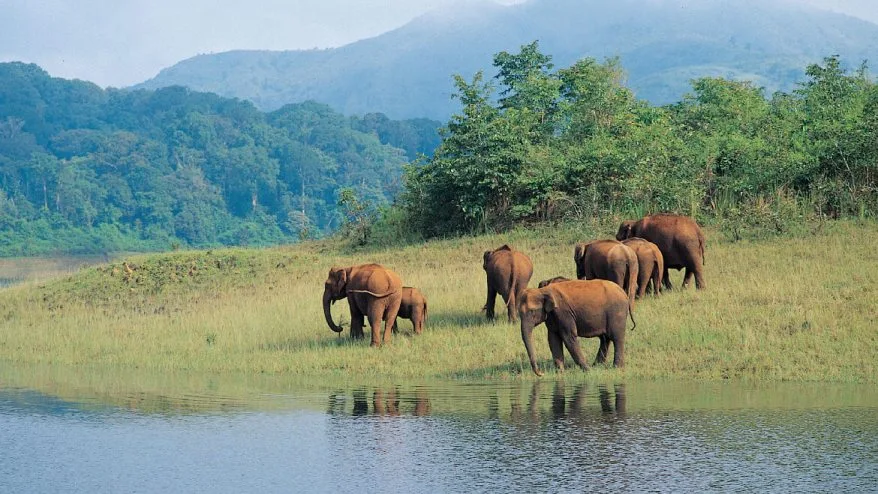
The Periyar Wildlife Sanctuary in Thekkady is a popular spot for people who love nature and wildlife. It covers a large area of 925 square kilometres and is part of the Western Ghats, which is a special place designated by UNESCO. This sanctuary is well-known for its Asian elephants, which can often be seen near Periyar Lake. There are also tigers in the dense forests, but they are not always easy to spot, which adds to the excitement of visiting the sanctuary. Visitors can enjoy activities like bamboo rafting, jungle treks, and boat rides to get a different view of the wildlife and where they live. Additionally, the sanctuary has a lot of different types of animals and plants, including over 196 kinds of birds and many reptiles and amphibians.
2. Parambikulam Tiger Reserve
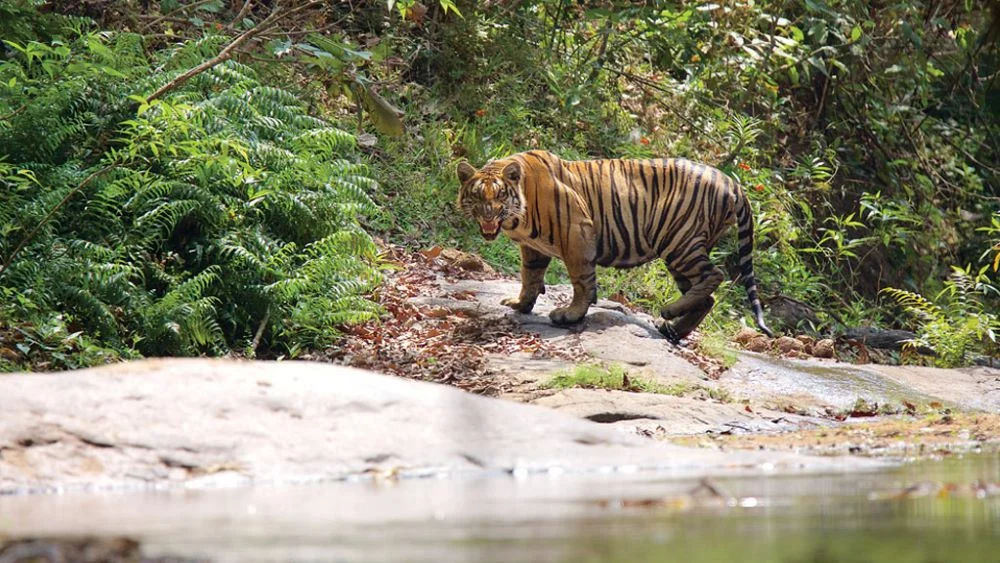
Parambikulam Tiger Reserve, nestled in the Western Ghats, is a haven for tiger conservation and eco-tourism. It spans 643 square kilometres and features a rich variety of ecosystems, including grasslands, wetlands, and tropical forests. The reserve is not only home to tigers but also leopards, elephants, and several species of deer. One of its unique attractions is the Kannimara Teak, the world’s oldest and largest teak tree, believed to be over 450 years old. Guided activities such as night safaris, treks, and bamboo rafting allow visitors to experience the sanctuary’s beauty up close. The tribal communities residing in the reserve play a vital role in its conservation, adding a cultural dimension to the visit. Their knowledge of the forests is invaluable, and their guided tours provide insights into the harmonious coexistence of humans and wildlife.
3. Chinnar Wildlife Sanctuary
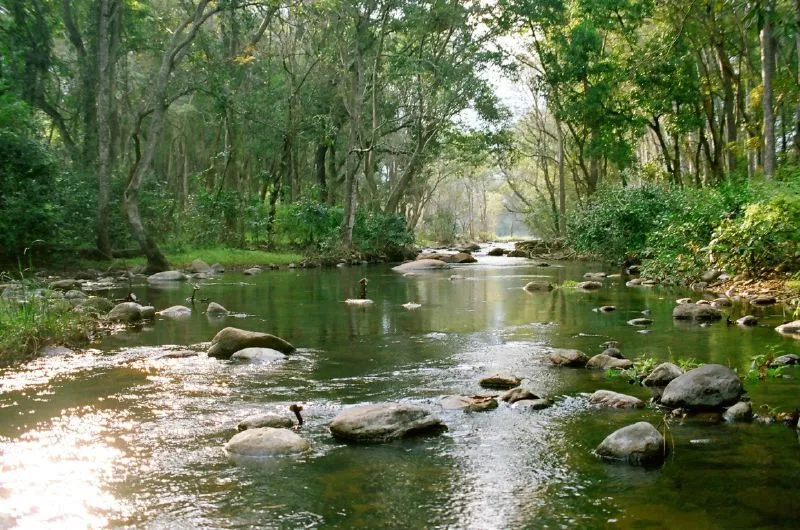
Chinnar Wildlife Sanctuary stands out for its distinct topography and unique ecosystem within the Western Ghats. Spread over 90 square kilometres, it lies in a rain shadow region, resulting in dry deciduous forests interspersed with grasslands and riverine vegetation. The sanctuary is a safe haven for the endangered grizzled giant squirrel, which draws wildlife enthusiasts from across the globe. Apart from this, it harbours other species like Indian star tortoises, tufted grey langurs, and spotted deer. The sanctuary offers trekking trails to the Thoovanam Waterfalls and cultural tours to tribal settlements, providing a blend of natural beauty and cultural heritage. Chinnar’s rugged terrain and diverse flora and fauna make it a captivating destination for those seeking offbeat experiences.
4. Wayanad Wildlife Sanctuary
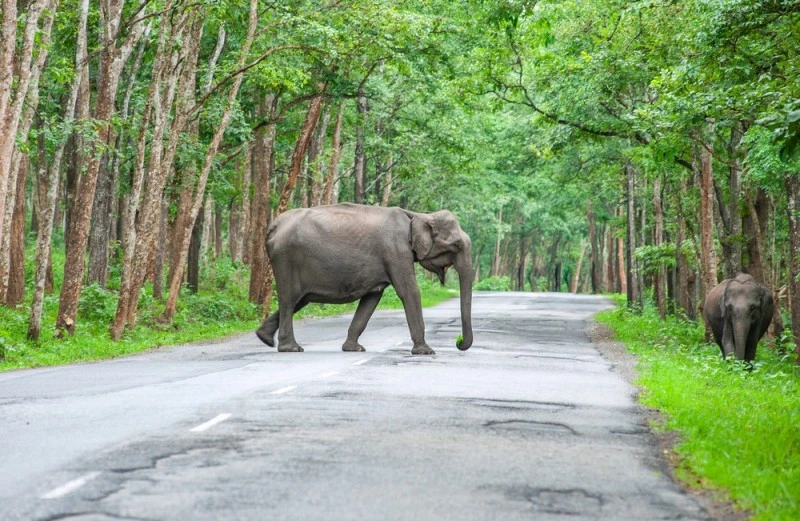
Part of the Nilgiri Biosphere Reserve, Wayanad Wildlife Sanctuary is a picturesque expanse of forest spread across 344 square kilometres. Known for its high density of elephants, the sanctuary also houses tigers, leopards, and a variety of deer species. Birdwatchers can delight in spotting peacocks, woodpeckers, and the rare Malabar pied hornbill. The sanctuary is divided into two major sections, Muthanga and Tholpetty, each offering distinct wildlife experiences. Jeep safaris are the highlight here, allowing visitors to explore the dense forest trails while encountering wildlife in their natural habitat. The surrounding coffee and spice plantations add to the region’s charm, making Wayanad a perfect blend of adventure and tranquillity.
5. Silent Valley National Park
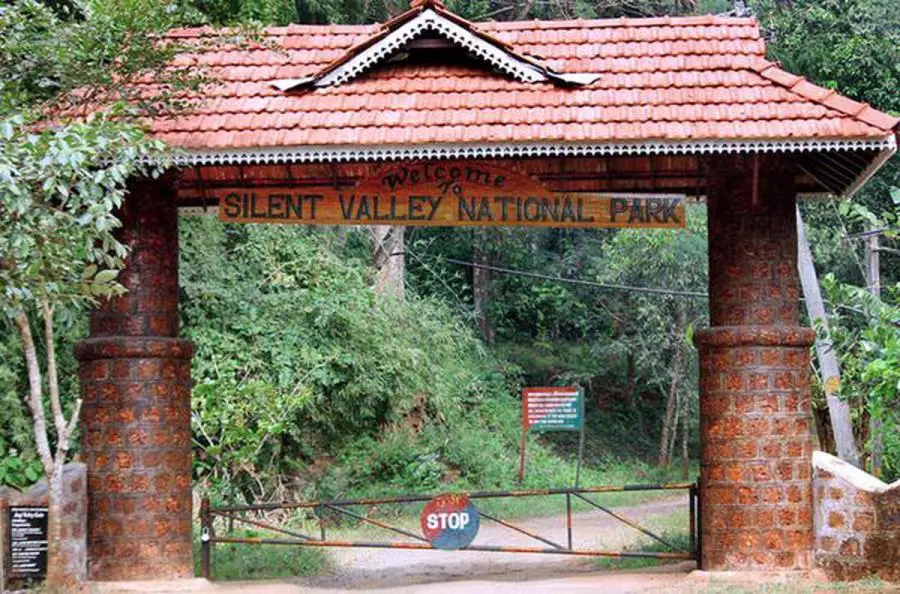
Silent Valley National Park is a pristine gem within the Western Ghats, untouched by human encroachment. Spread across 89 square kilometres, it is home to some of the most endangered species, including the lion-tailed macaque, Nilgiri langur, and Malabar civet. The Kunthipuzha River flows through the park, adding to its scenic allure. The name “Silent Valley” is derived from the absence of cicadas, creating an eerie silence amidst the lush greenery. Guided treks reveal the park’s rich biodiversity, with towering trees, orchids, and rare plants. Silent Valley’s untouched ecosystem and serene ambience make it a must-visit for those seeking solitude and connection with nature.
6. Eravikulam National Park
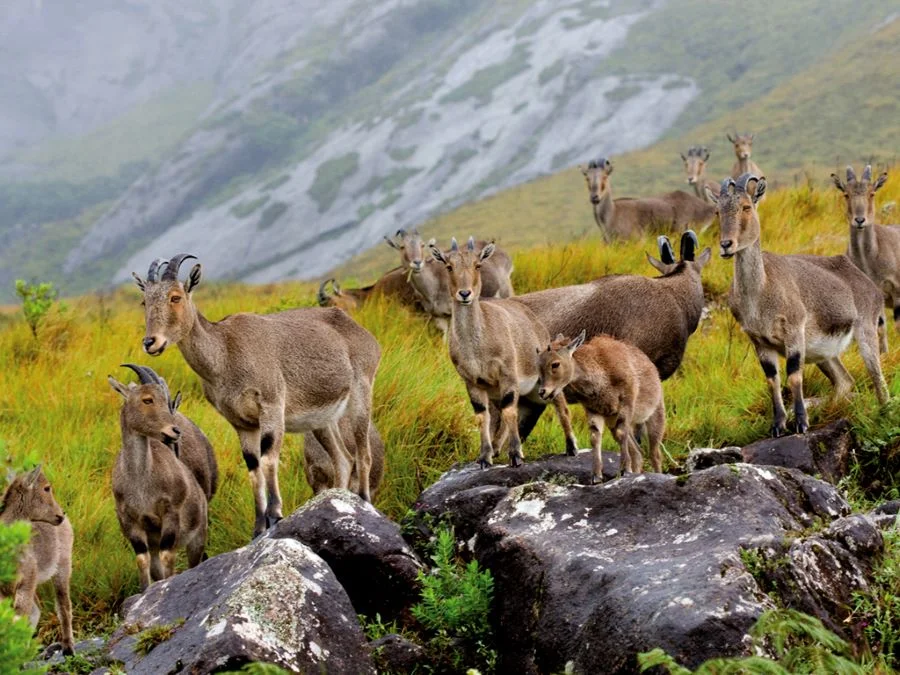
Located in the misty hills of Munnar, Eravikulam National Park is famous for its rolling grasslands and the endangered Nilgiri tahr. The park covers 97 square kilometres and provides panoramic views of the Western Ghats. It is also the site of the Neelakurinji bloom, a rare phenomenon where the hills turn blue with flowers once every 12 years. Trekking is a popular activity here, with trails offering breathtaking views of the tea plantations and valleys below. Eravikulam is also an excellent spot for birdwatching, with species like the Nilgiri flycatcher and white-bellied shortwing frequently spotted. The park’s unique combination of scenic beauty and biodiversity attracts nature lovers and adventure seekers alike.
7. Thattekad Bird Sanctuary
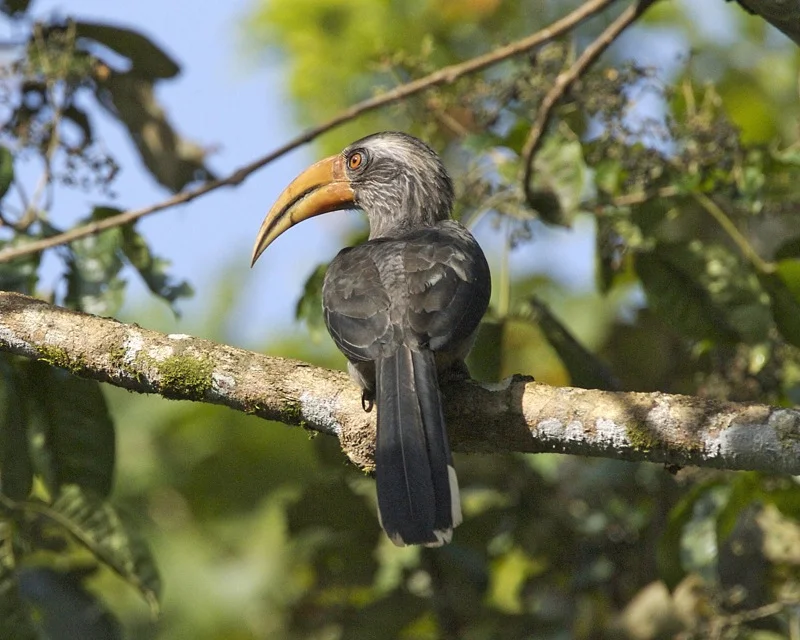
The Thattekad Bird Sanctuary, also known as the Salim Ali Bird Sanctuary, is a paradise for bird enthusiasts. Spanning 25 square kilometres, it is one of the richest bird habitats in India, with over 300 recorded species. Notable sightings include the Malabar grey hornbill, white-bellied treepie, and Ceylon frogmouth. The sanctuary’s lush surroundings, fed by the Periyar River, make it an ideal breeding ground for birds. Guided birdwatching tours provide insights into the avian diversity and ecology. Apart from birds, Thattekad is home to small mammals, reptiles, and butterflies. The tranquil ambience and thriving wildlife make it a must-visit for anyone passionate about ornithology.
8. Peechi-Vazhani Wildlife Sanctuary
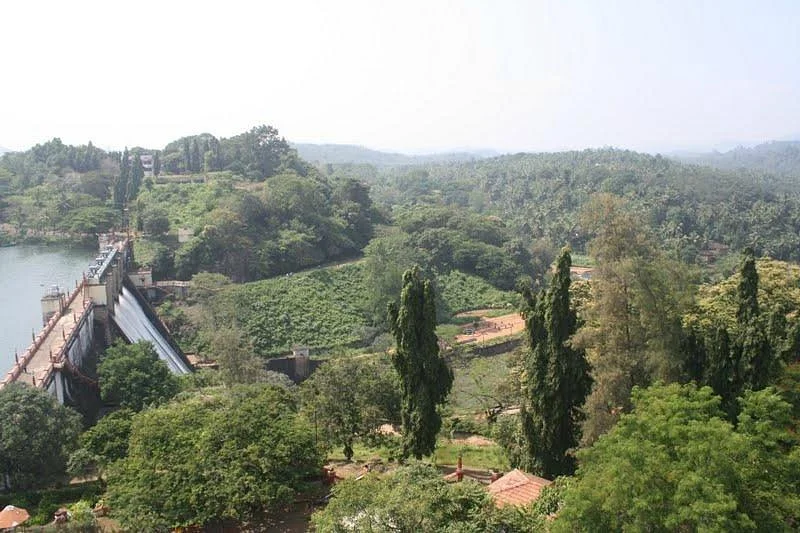
Located near Thrissur, the Peechi-Vazhani Wildlife Sanctuary spans 125 square kilometres and is centred around the Peechi and Vazhani reservoirs. This sanctuary is a lesser-known gem that offers a peaceful retreat into nature. It is home to a variety of wildlife, including elephants, leopards, sambar deer, and numerous bird species. The reservoirs provide a scenic backdrop for boating and picnicking, while forest trails allow visitors to explore the diverse flora and fauna. The sanctuary also serves as a water source for nearby regions, highlighting its ecological importance. Its serene environment and relatively low tourist footfall make it an ideal destination for quiet exploration.
Best Time to Visit Kerala’s Wildlife Sanctuaries
The best time to visit Kerala’s wildlife sanctuaries is during the cooler and drier months from October to March. This period coincides with Kerala’s winter season, offering pleasant weather ideal for exploring the rich biodiversity of sanctuaries like Periyar, Wayanad, and Parambikulam. Animals are more easily spotted during these months as they come out of dense foliage and gather near water sources that remain plentiful after the monsoon. Moreover, the reduced humidity and moderate temperatures make treks and safaris more comfortable. Avoid the monsoon season (June to September) as heavy rains can hinder travel and limit visibility for wildlife spotting.
Conclusion
Wildlife sanctuaries in Kerala showcase the state’s diverse plant and animal life, making them a great place for nature lovers and wildlife enthusiasts to visit. These sanctuaries, like Periyar with its elephants and Thattekkad with its birds, allow visitors to see wildlife in their natural habitats. Whether you prefer peaceful boat rides, exciting jeep safaris, or relaxing treks, you can enjoy the lush green landscapes and diverse ecosystems that make Kerala a special place for seeing wildlife. These sanctuaries focus on conservation and responsible tourism, not only protecting endangered species but also helping visitors appreciate the beauty of nature even more.
Here you can also check our Kerala Tour Packages.
People also ask about Wildlife Sanctuaries in Kerala
1. What activities can I enjoy in Kerala's wildlife sanctuaries?
Activities include jeep safaris, nature treks, birdwatching, boat safaris, camping, and visiting eco-tourism centres.
2. When is the best time to visit Kerala's wildlife sanctuaries?
The best time is from October to March when the weather is cool and conducive to wildlife spotting.
3. Are children allowed in the wildlife sanctuaries?
Yes, children are allowed, but activities like treks or safaris may have age restrictions for safety reasons.
4. What should I carry while visiting a wildlife sanctuary?
Essentials include comfortable clothing, sturdy shoes, binoculars, sunscreen, insect repellent, water bottles, and a camera.
5. Are guided tours available?
Yes, most sanctuaries offer guided tours led by naturalists or forest officials to enhance your experience and ensure safety.
6. What is the cost of entry and activities?
Entry fees and activity costs vary between sanctuaries. Discounts may be available for children and students. Check specific sanctuary websites for details.
7. Is it safe to visit wildlife sanctuaries?
Yes, it’s generally safe as long as visitors follow the rules, stick to designated trails, and avoid disturbing the wildlife.
8. Can I stay overnight in a sanctuary?
Many sanctuaries offer eco-lodges, forest rest houses, and camping options for an immersive experience.
9. Are permits required to visit Kerala's wildlife sanctuaries?
Basic entry tickets are sufficient for most sanctuaries, but permits may be needed for specific activities like trekking or camping.
